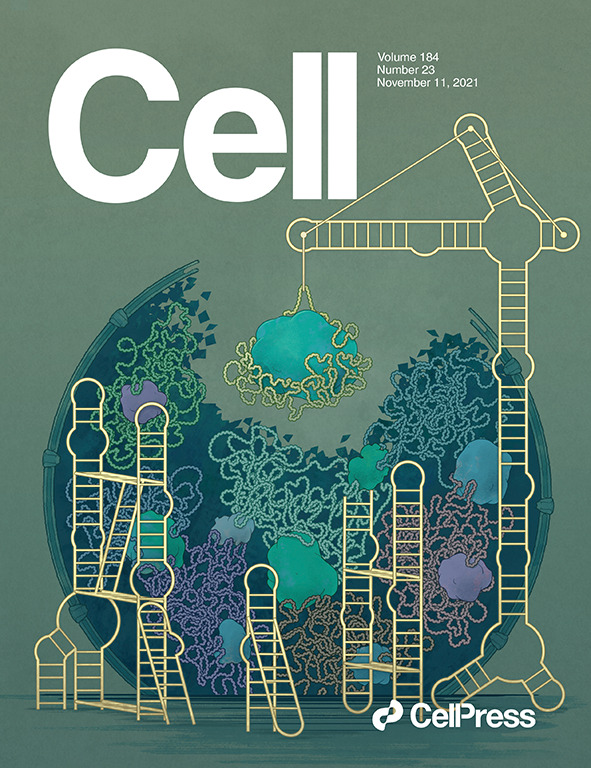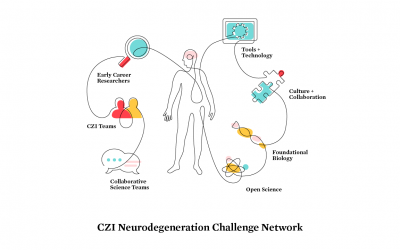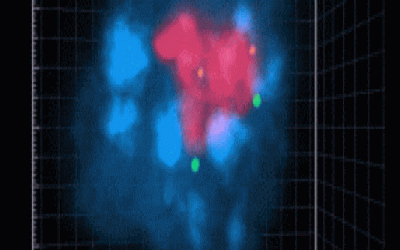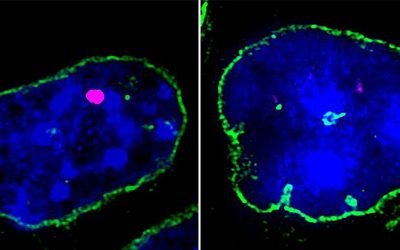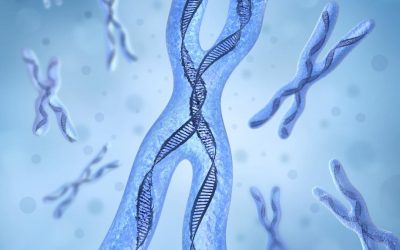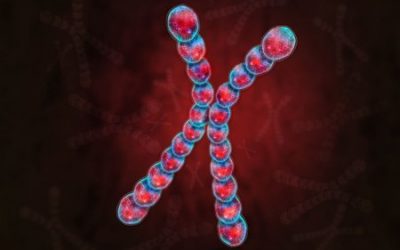News
Announcements
Publication: RNA promotes the formation of spatial compartments in the nucleus
Artwork by Inna-Marie Strazhnik/Caltech
Publication: Single-cell measurement of higher-order 3D genome organization with scSPRITE
New paper now published to Nature Biotechnology: “Single-cell measurement of higher-order 3D genome organization with scSPRITE”. This new application of our SPRITE methods measures multi-way DNA interactions around nuclear bodies, TADs, and P-E in hundreds of mouse embryonic stem cells. Read the Paper here
Publication: SARS-CoV-2 Disrupts Splicing, Translation, and Protein Trafficking
Guttman lab’s Nature Reviews article discussing the role of nuclear compartmentalization is out now. Titled “Nuclear compartmentalization as a mechanism of quantitative control of gene expression”, read the full text here
Welcome Noah Epstein!
Welcome Noah Epstein! Noah joins our lab as a graduate student and is interested in studying nuclear compartmentalization.
Welcome Olivia Ettlin!
Welcome Olivia Ettlin! We’re thrilled to have Olivia join us as Guttman Lab’s newest Technician-Assistant.
Mackenzie Strehle, finalist in Caltech’s 3 Minute Thesis competition
Did you know that all calico cats are ladies? In just 3 minutes, you can learn about the X-lined biology behind this remarkable fur patterning. Congrats to graduate student Mackenzie Strehle for being a finalist in Caltech’s 3 Minute Thesis competition! Watch the video on YouTube:
.
Abhik Banerjee graduates
Congratulations to our newest graduate Abhik Banerjee! We will miss you and we look forward to seeing what exciting things await you!
Welcome Isabel Goronzy!
Welcome Isabel Goronzy! Isabel has joined Guttman Lab as a MD/PhD graduate student.
Moved to Chen
Guttman Lab has moved! We’re now making ourselves at home in the brand new Chen Neuroscience Research Building, a beautiful open-space center constructed with scientific collaboration in mind. Learn more about the space
Mario in Faces of Cell
Mario Blanco is featured in Faces of Cell for his work in “SARS-CoV-2 Disrupts Splicing, Translation, and Protein Trafficking to Suppress Host Defenses“. Learn more

In The News
Biology Graduate Student Recognized for Outstanding Achievement
Graduate student Sofia Quinodoz has been awarded the Harold M. Weintraub Graduate Student Award by the Fred Hutchinson Cancer Research Center. The award recognizes “outstanding achievement during graduate studies in the biological sciences.” Learn more at Caltech News
Mitchell Guttman has been named a Ben Barres Early Career Investigator by the Chan-Zuckerberg Initiative (CZI).
Read more at the NYSCF here
SPRITE: A New Technique For Mapping DNA In Our Nuclei
Researchers at the California Institute of Technology led by NYSCF – Robertson Investigator Mitchell Guttman, PhD, have developed a new tool called SPRITE to uncover how cells organize their DNA within the nucleus.
Read more at the NYSCF here
A map to the center of the cell
Researchers from the California Institute of Technology (CA,USA) have unraveled the mystery of how the genome is organized inside the nucleus. Read the article in BioTechniques
The Cartography of the Nucleus
Caltech researchers have shown how cells organize the seemingly immense genome in a clever manner so that they can conveniently find and access important genes. Understanding the delicate three-dimensional organization of the genome is crucial, particularly because alterations in DNA structure have been linked to certain diseases such as cancer and early aging. Mapping and pinpointing alterations in nuclear structure may help in finding solutions to these diseases.
Read more here
A translator of his own work
A translator of his own work
Mitch Guttman fashioned himself a biologist as well as a builder of scientific tools, methods, and algorithms when he arrived at Caltech in 2013. Others, he thought, would translate his fundamental science into more effective treatments for patients. Today, he has a different perspective.
Read more in the Caltech Magazine here
Hushing the X Chromosome
Hushing the X Chromosome
Changes to the three-dimensional structure of DNA in the nucleus are required for X-chromosome silencing, also known as X inactivation. A single molecule called Xist is responsible for the DNA remodeling, and these structural changes are critical for chromosome silencing.
Read more here
Silencing the X Chromosome
Silencing the X chromosome
Scientists at Caltech developed a new approach allowing them to look at lncRNA complexes in cells and were able to identify the proteins that directly interact with the Xist RNA and, ultimately, are necessary to silence transcription of the X-chromosome. These results provide the first detailed view of how a lncRNA controls gene regulation.
Read the NIH Director’s blog here
How an RNA gene silences a whole chromosome
How an RNA Gene Silences a Whole Chromosome
By studying an important lncRNA, called Xist, researchers at Caltech have discovered how an abundant class of RNA genes, called long non-coding RNAs (lncRNAs, pronounced link RNAs) can regulate key genes. The scientists identified how this RNA gathers a group of proteins and ultimately prevents women from having an extra functional X-chromosome.
Read more here

